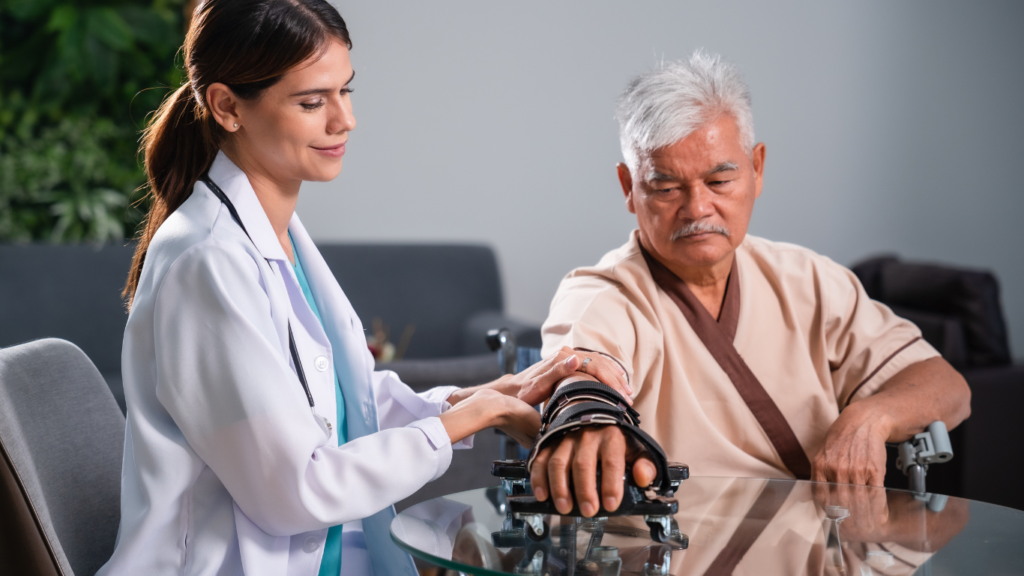Virtual Reality (VR) is revolutionizing the field of anatomical education by offering immersive experiences that enhance learning and visualization. As an avid supporter of innovative educational tools, I’ve witnessed firsthand the transformative power of VR in bringing complex anatomical concepts to life.
With VR technology, students can explore the human body in three dimensions, gaining a deeper understanding of its intricacies. In this article, I’ll delve into the ways VR is reshaping anatomical education, from interactive virtual dissections to realistic simulations of physiological processes.
As a proponent of leveraging technology to enhance learning outcomes, I’ll explore the benefits of incorporating VR into medical and healthcare curricula. Join me on this journey to discover how VR is not just a tool for visualization, but a gateway to a more immersive and engaging way of learning anatomy.
Virtual Reality in Anatomical Education
Virtual Reality (VR) enhances anatomical education through immersive experiences that boost learning and visualization. Exploring the human body in three dimensions using VR technology allows students to grasp anatomical concepts more profoundly.
From interactive virtual dissections to lifelike simulations of physiological processes, VR is revolutionizing anatomical education. Integrating VR into medical and healthcare curricula can significantly improve learning outcomes, offering a more engaging and immersive approach to understanding anatomy.
Benefits of Using VR for Visualization
Enhanced Learning Experience
Enhancing the learning experience is a key benefit of utilizing VR for anatomical education. By immersing myself in virtual environments, I can explore the intricacies of the human body in a hands-on manner. This active engagement promotes better retention and understanding of anatomical structures and functions.
Improved Spatial Understanding
VR technology offers a unique way for me to improve my spatial understanding of complex anatomical concepts. Navigating through three-dimensional representations of the human body allows me to visualize spatial relationships more effectively.
This enhanced spatial awareness aids in grasping the spatial orientation of organs and structures within the body.
Case Studies of VR Applications in Anatomy
In this section, I’ll delve into specific case studies that exemplify the practical applications of Virtual Reality (VR) in the field of anatomy education. These real-world examples demonstrate how VR technology is transforming the way students learn and visualize complex anatomical structures.
1. University of Queensland – VR Anatomy Lab
At the University of Queensland, VR technology has been integrated into the anatomy lab to enhance students’ learning experiences. By using VR headsets, students can explore detailed 3D models of anatomical structures, such as the human heart, brain, and skeletal system.
This immersive approach allows students to interact with virtual cadavers, dissect tissues, and gain a deeper understanding of human anatomy in a realistic virtual environment.
2. Case Western Reserve University – HoloAnatomy
Case Western Reserve University has developed a groundbreaking VR platform called HoloAnatomy, which combines Microsoft HoloLens technology with anatomical learning. Through HoloAnatomy, medical students can visualize and manipulate 3D holographic images of organs and body systems.
This interactive tool enables students to rotate, dissect, and examine virtual anatomical models from all angles, offering a hands-on learning experience that enhances spatial understanding and retention of complex anatomical concepts.
3. Stanford University School of Medicine – Stanford Virtual Heart
Stanford University School of Medicine has introduced the Stanford Virtual Heart project, a virtual reality application that allows users to explore the intricacies of the human heart in a 3D virtual environment. By immersing themselves in a realistic simulation of the heart’s anatomy and physiology, medical students can gain insights into cardiac function, structural abnormalities, and treatment approaches.
The Stanford Virtual Heart provides an interactive platform for students to study cardiac anatomy in unprecedented detail, improving their diagnostic skills and medical knowledge. These case studies illustrate the diverse applications of VR in anatomical education, showcasing how immersive technology enhances learning outcomes and allows students to engage with anatomy in innovative ways.
By incorporating VR tools into medical curricula, educational institutions are revolutionizing the teaching of anatomy and providing students with dynamic, interactive experiences that enrich their understanding of the human body.
Challenges and Limitations of VR in Anatomical Education
As I delve deeper into the realm of Virtual Reality (VR) in anatomical education, it’s essential to acknowledge the challenges and limitations that come with integrating this cutting-edge technology into the medical curriculum. While VR offers unparalleled immersive experiences, there are several key hurdles that educators and institutions face when utilizing VR for anatomical education.
- Cost Implications: Implementing VR technology in anatomical education requires significant financial investment. From acquiring the VR hardware and software to maintaining and updating the systems, the costs can be prohibitive for some educational institutions, especially those with limited resources.
- Technical Complexity: VR technology is constantly evolving, leading to compatibility issues and technical challenges. Ensuring that VR devices, software, and platforms are seamlessly integrated with existing educational tools can be complex and time-consuming for educators and IT departments.
- Training and Support: Effectively utilizing VR for anatomical education demands specialized training for educators. Learning how to navigate VR platforms, create or customize content, and troubleshoot technical issues requires dedicated time and resources. Ongoing technical support and updates are also crucial to ensure a smooth learning experience for students.
- Accessibility and Equity: Not all students have equal access to VR technology outside of educational settings. Disparities in access to VR devices and internet connectivity can create barriers to learning for students from underprivileged backgrounds. Ensuring equitable access to VR resources is essential to prevent further educational inequalities.
- Validation and Standardization: Validating the accuracy and reliability of anatomical content in VR simulations is paramount. Establishing standardized protocols for creating, vetting, and updating VR content to align with established educational standards is crucial for ensuring the quality and efficacy of VR-based anatomical education.
Navigating these challenges and limitations is crucial for educators and institutions looking to maximize the benefits of VR in anatomical education. By addressing these hurdles proactively and strategically, educators can create a more inclusive and effective learning environment that harnesses the full potential of VR technology.
Future Prospects of VR for Anatomy Visualization
Exploring the potential advancements in Virtual Reality (VR) for anatomy education reveals promising avenues for enhanced learning and visualization experiences. As VR technology continues to evolve, the future prospects for anatomy visualization are bright, offering innovative solutions to current educational challenges.
- Expanded Accessibility: With ongoing technological advancements and decreasing costs, VR tools for anatomical education are becoming more accessible to a wider range of educational institutions. This increased accessibility can democratize access to high-quality anatomical education resources, benefiting students globally.
- Personalized Learning Experiences: Future developments in VR for anatomy visualization can cater to individual learning styles and paces. By offering customized learning experiences, VR can adapt to the needs of students, providing tailored approaches to understanding complex anatomical structures.
- Enhanced Interactivity: The future of VR in anatomy education holds the promise of even greater interactivity, allowing students to engage with anatomical models in more dynamic and immersive ways. By fostering active learning through hands-on manipulation of virtual anatomical structures, VR can further enhance student engagement and retention.
- Integration with Emerging Technologies: As VR technology integrates with other emerging technologies such as artificial intelligence and augmented reality, the possibilities for anatomy visualization expand significantly. These integrations can lead to more interactive and comprehensive educational experiences, offering students a holistic understanding of anatomical structures.
- Innovative Research Opportunities: The evolution of VR for anatomy visualization creates new opportunities for research in medical education and healthcare. By enabling researchers to study the effectiveness of VR tools in anatomical education, future prospects include advancements in pedagogical approaches and improved medical training outcomes.
- Global Collaborative Learning: VR technology has the potential to facilitate global collaborative learning experiences in anatomical education. Through virtual classrooms and shared anatomical simulations, students and educators can engage in cross-cultural exchanges, fostering a deeper understanding of anatomical concepts from diverse perspectives.
The future prospects of VR for anatomy visualization are marked by continuous innovation and growth, presenting exciting opportunities to revolutionize anatomical education. By embracing these evolving technologies strategically, educators and institutions can optimize the use of VR for enhanced learning outcomes and enriched educational experiences.



